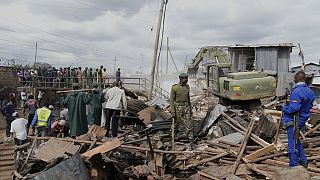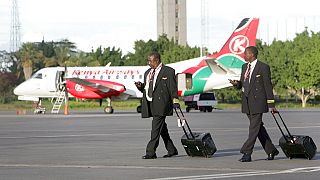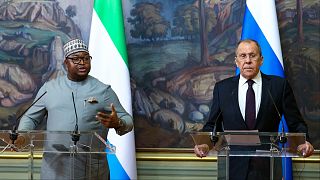Kenya
Kenya Airways has adopted other cost cutting measures as the company’s management seeks to improve operational profits and narrow losses for the year ending in March.
In an interview with the Reuters news agency, the CEO of Kenya Airways, Mbuvi Ngunze, said the airline has resorted to reducing the size of its fleet and bank on the lowered fuel cost to maximize profit in 2016.
“Kenya Airways expects to report an improvement in operating profit and narrower losses for the year ending in March because of savings made by reducing the size of its fleet and lower fuel costs,” he said.
The company has been struggling to keep a balance of its operations and profits after recording pretax loss of $293 million for three consecutive years up to its financial year end of March 2015. But the losses narrowed in the last six months to September 2015.
“We are still in debt, clearly, and we told you last year we are looking for 200 million dollars in terms of bridge money to allow us to have working capital in order to prepare the long term capital structure of the business. We drew 100 million mid-last year and we are about to draw the second 100 million to allow us to have flexibility in the business today and also to allow the creditor position to reduce,” Ngunze said.
“From my bottom line point of view operating profit will see an improvement this year clearly because as we told you that the operating profit is a strong lever for us, of course the loss will reduce but we will have of course some big hits,” continued the CEO.
Ngunze is expecting the transaction advisors to draw up plans on the new debts and equity funds by April, with cash raise expected to pick up in the next nine months.
The CEO further added that the Kenyan government, with a 29.8 percent stake in the airline, already supports plans to cut down operational costs. The company has already sold two of its Boeing aircraft and sub-leased another five planes to cut costs.
“We already made a decision about aircraft, so today we have sold 777-200s, two of them, they are out of the network. The 777-300s, we are sub-leasing those, we are sub-leasing another two 787s so all those actions have been taken; those are painful decisions in a business.
People decisions are much more sensitive and the thing about people decisions is not that you can just make a casual approach to them, we have to make as part of the holistic view of the plan a solid review of where do we need to take reductions, what sort of quantum do we need, the impact of that and how to finance it,” he added.
The airline offered a capacity of 15.4 billion available seats per km at the end of March 2015, and this has only fallen by 2 to 3 percent with the low number of fleet operating.
Ngunze said that the company is now banking its hopes on West Africa where it expects tourism to increase with the end of Ebola.
“There is a mixed bag in terms of passenger demand, what I see is a sense of stability coming back in Africa having seen some reduced numbers last year particularly into West Africa where we had the Ebola issues. Tourism is still taking time to pick up, but it will come back and I am optimistic about the possibilities going ahead,” added Ngunze.
Kenya airways has adversely been affected in the previous years after Islamist militants conducted a series of attacks in Kenya which brought down the tourism industry. The airline also cited losses from the expensive modern airplanes and stiff competition from other carriers.












02:17
Kenya: Start up devises personal patient information as payment option for healthcare
01:00
Kenya: Death toll from floods passes 200
01:06
Kenya: Residents lose more property to heavy rains
01:10
Tourists and staff evacuated from Kenya's flood Maasai Mara national reserve
01:02
Pics of the day: May 2, 2024
01:00
Death toll from floods rises in Kenya as evacuations continue